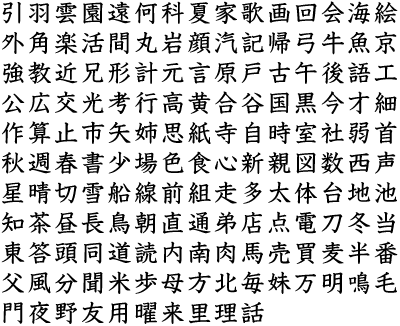I decided to make カツ丼 (katsudon) for New Year’s this year. It’s definitely the most complicated thing I’ve ever made for New Year’s—our family’s usual dinner is fried chicken and New Year’s pretzel—but I really wanted to make it for everyone and I hadn’t thought of it in time for Chanukah and I was too busy making cookies during Christmas.
It was a wild goose chase of strange Asian markets to try and find the ingredients. I found a surprising number of them in my local grocery store—who knew Giant Eagle carried mirin?—but at the end of my day of shopping, during which I had asked かつおぶしはどこですか (katsuoboshi was the thing I was looking for: it’s dried tuna flakes) more times than I can count, I ended up in a strange little Oriental market in a tiny strip mall that shared a parking lot with a Red Lobster.
My siblings, who made the mistake of deciding to come along, petered around the market, whispering to each other because speaking English in the market felt a little bit like infringing on the delicate island of Asian culture within the massive sea of English-speaking America. When I muttered to myself, I very deliberately did so in Japanese, for the same reason. It felt like a heinous act of cultural appropriation to so much as exist in that store, and even more so to speak in a non-Asian language.
I failed to find what I was looking for, so I bought a poor substitute (dried scallops) and we went home. During the car ride, we talked about the way it felt to be Jews infringing on Asian culture. Then, as we walked into the house, I saw that my sister was carrying a bag with some brightly-colored packages in it. Knowing that she had a hard time even navigating the store since everything was in some combination of Chinese, Japanese, and Korean, I wondered what it was that she had picked up.
“What is that?” I asked, gesturing to the packages.
“Oh! This is a dessert dumpling thingy that we all had when we went to Hong Kong! Everyone loved it, and I saw it, so I picked up some!” She proceeded to rant enthusiastically about how good the thing was, and as soon as we got home, she took out one of the packages and made it right there and then. She was right. It was awesome.
After we ate our dessert dumpling thingies, which turned out to be called milk yolk buns, I started cooking my カツ丼. The first thing I did was boil the dried scallops to make a poor substitute for だし (tuna broth). Then, I went about making とんかつ. I heated the oil and set up everything I needed to bread the pork tenderloins, then breaded them as I watched the oil heat up in the pot. When the oil was hot enough that a panko crumb dropped into it would float right to the top, I started frying the breaded pork. At some point, my sister put on some 80s rock.
As we all cooked and ate and hung around, I remembered something. One of our first missteps on our wild goose chase for katsuoboshi was an Indian market. While searching up and down the aisles, one of my sisters asked for help from an older Indian man. He said that he’d never heard of what we were looking for, since the store didn’t even carry Japanese foods, but he was very happy that we were here, and he recommended trying some Indian food if we’d never had some. He even gave us a specific restaurant at which we should do so.
And that got me thinking. If I was walking around a Jewish market—I’ve never been to one, since Giant Eagle has a good Kosher section, but if I had—and somebody came around and clearly had no clue what they were doing, I would have been happy to help them out. Obviously, if they’re here, they have some interest in Jewish food: how awesome is that?! Somebody who isn’t a part of my culture wants to learn about it! I couldn’t imagine myself thinking of it as anything other than flattering.
On a regular basis, my family has goyish visitors over for the High Holidays. We love sharing our culture with people who aren’t a part of it. And as I thought about it, so did that Indian man who saw clearly non-Indian people trolling through an Indian market looking confused. So did the person who hosted my siblings when they stayed in Hong Kong, who taught them about the milk yolk buns. And so would I, if I had been in either of those positions.
Nowadays, we hear all about cultural appropriation. It’s a terrible, awful thing to do, they say. But what exactly is it? What counts? Because if I saw a goy wearing a yarmulke or making latkas, my first thought would be “wow, that’s neat!”
As a member of a minority culture myself, I’ve never understood why “cultural appropriation” is a separate concept from “ridicule” and “theft”. The times when it makes sense for people to shout “cultural appropriation” seem to fall into those two categories: either someone is imitating a kind of cultural stereotype that ridicules the culture in question, or else a corporation is stealing art made by a culture without paying the people who actually came up with the art in the first place.
If cultural appropriation is just ridicule and theft as they relate to culture, then obviously it’s bad, but ridicule and theft are already bad. Why have a separate word? And further, I’ve heard some people calling “cultural appropriation” when someone does something like show genuine interest in a culture, or want to combine parts of that culture with parts of their own. And, speaking again as a member of a minority culture… I appreciate the effort, but I think people are trying to protect me from something I really don’t need to be protected from.
When some other culture steals American majority culture, nobody complains. In Japan, people celebrate Christmas, but they do it in some notably Japanese ways. Notably, there is no “Christ” in Japanese Christmas: a very small fraction of Japanese people are Christian. Further, they have a specific Christmas cake; Christmas is time for couples, not families; and on Christmas Day, they eat KFC. Basically, Japanese people stole American Christmas and made it theirs. They committed the sin of cultural appropriation. Right?
Not really. Here’s the key difference, and it doesn’t have to do with minority vs majority cultures. The things that we call “cultural appropriation” that are genuinely despicable happen when someone steals a culture or cultural tradition and pretends that it’s theirs, that they own it. The sorts of things people call “cultural appropriation” that are actually fine happen when someone uses aspects of a culture or cultural tradition, but respects the origins of the culture and defers to the people who actually have that cultural background. They borrow, they don’t steal.
You don’t need a “get out of cultural appropriation free” card from a Real Member Of That Culture™ in order to be able to borrow culture. You can borrow whatever culture you want, so long as you do it respectfully. Understand that the Real Members Of The Culture are the keepers of their culture, if not the proprietary practitioners of it. And ask them questions, not permission.
We native Jews are the keepers of our culture. If you would like to borrow it, we would be flattered. Yes, you should learn about our culture before you try to imitate it, since otherwise you might accidentally imitate a stereotype. Yes, you shouldn’t mass market Jewish art without compensating the Jews who did the art. (Art theft is still art theft, and it’s still bad.) But none of that means you’re not allowed to have latkas for the Fourth of July if you like. In fact, they’ll fit in perfectly with all that deep-fried American goodness. (Please eat latkas. I love them and I’m sick of having to explain to people what they are.)
Here’s a passage from the Passover Haggadah. “All who are hungry, come and eat; all who are needy, come and make Passover.” Basically, if you want to come in and celebrate our holiday with us, we’d be happy to grab you a yarmulke and a place setting. I think if everyone had that kind of attitude towards culture, the would could be a better, more unified place.
よいお年をお迎えください。(Happy New Year.)



